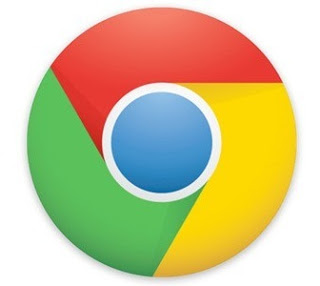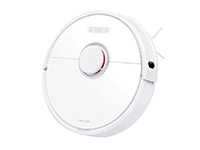7 amazing strategy games coming in
2016

Watching the news headlines of January 2016, you would be forgiven for not feeling quite the master of your own destiny. Bad, chaotic things seem to be happening everywhere, and no-one seems quite sure how to stop them happening, or make other, nicer things happen instead. We are being tossed, rudderless, on the crashing waves of fate, and every so often one of us gets eaten by a whale.
But don't fret over this sense of powerlessness – 2016's front line of real-time strategy has got you. With a few effortless clicks of the mouse you'll be raising empires on Mars, routing an alien invasion force and commanding hordes of 19th century soldiers to hurl themselves fruitlessly into a barrage of enemy cannon fire. So close the blinds. Put on the headphones. There. You are in control again.
Total War: Warhammer

Have you ever been ordering your ho-hum human units about the battlefield of a Total War game and found yourself thinking, 'this would be a lot better with some zombie dragons?' We have.
Praise Tzeentch, then, for Total War: Warhammer, which trades in all the historical realism that gets dads all excited for five fantastical tabletop armies: the Empire (people who get to ride griffins), the Orcs (who get to ride boars), the Undead (with their zombie dragons), Chaos (who corrupt everything with evil magic) and Dwarves (who thump things with hammers).
No details on where the rest of the Warhammer races have got to – where are our Lizardmen, Creative Assembly? – though we'd be downright flabbergasted if we didn't see more armies marching out of the DLC swamplands with time.
XCOM 2

Firaxis doesn't care how good you think you are at XCOM: Enemy Unknown. Think you beat the game? Vanquished the alien menace? Drove back the tide of xenomorphic imperialism? No. You lost. And if you think otherwise, then that's probably the aliens fiddling with your brain.
That's the set up of XCOM 2, set 20 years after your crushing defeat in the first game. XCOM and the Global Council have been squashed, and you're lumped with the task of founding a new resistance movement, training new squad members and researching all the technology you never got the chance to when you lost so embarrassingly (which you did) the first time around. All of which you will definitely need, as between the sequel's procedurally generated levels and new enemies like the above human-alien sympathizers, prising Earth out of the grip of our alien overlords only seems to have gotten harder.
Master of Orion

As we've covered, Earth in 2016 is just awful. Far better to pack it in and go to space. Nothing bad ever happens in space, especially when you're competing to lead a faction of warring aliens to galactic dominance. In order to keep your race (one of ten, since you ask) happy and not-dead you'll need to not only engage in trade, diplomacy and warfare, but make tough decisions on which stars to colonise and in which technologies to invest.
Get it wrong and your ungrateful space-plebs' morale will drop, right before another player, who's invested more time into researching weapons, bombs them into a glassy crater. Earth's not looking so bad now, is it?
Cossacks 3

Who says you can't make money from old rope? Not rope recycling companies, and not S.T.A.L.K.E.R. developers GSC Gameworld, which proudly admit that Cossacks 3 is basically 2000's Cossacks 1 given a spit shine (the devs estimate that somewhere between 80 percent and 95 percent of the original gameplay mechanics remain totally unchanged) for Windows, OS X and Linux.
What this means on PC in 2016 is a massive 10,000 units on screen at once, with a ludicrous amount of control over each. Want to throw all 10,000 troops against an enemy like a toddler hurling fistfuls of green plastic army men? Fine. Want to zoom in and pester your soldiers one-by-one, like some micromanaging ant queen? That's fine, too. And if you don't want to do either, there will be modding tools available at launch, because PC.
Battlefleet Gothic: Armada

There was nothing quite like Battlefleet Gothic to make all your marathon Warhammer painting sessions feel like a pointless waste of time. We once made a Space Marine with a flamethrower with cotton wool flame coming out of the end. We soaked the cotton wool in a glue-solution to make it solid and painted it to look like fire. It was amazing. All the people in Games Workshop said so.
And then Battlefleet Gothic came out and suddenly there were planet-sized spaceships full of anonymous Space Marines in the thousands. In Tindalos's RTS adaptation, your job will be to rally these monstrous vessels to fight off alien fleets encroaching on human-controlled space. It sounds just like the tabletop game – except with fewer gargantuan warships getting accidentally knocked off the table and trodden on.
Offworld Trading Company

Enough of the shooting and the violence – everyone knows that the real villains of 2016 are the greedy robber baron fatcats buying up orphanages as a place to keep all their excess diamonds. And if you think the corporate elite are bad on Earth, just wait 'til you see what they're like on Mars.
Yes, the cutthroat world of Martian capitalism is a cruel and unforgiving place, with different races mining, harvesting and bartering in a bid to bankrupt their opponents and take all their stuff. As you expand your business empire you'll have to undercut and outbid other players for control of precious, randomly generated resources, or maybe employ hackers and saboteurs to do the job for you. If Gordon Gecko had been stranded on Mars instead of Matt Damon, this is almost certainly what would have happened.
Halo Wars 2

We're not too proud to say we know almost nothing about this game, developers Creative Assembly (of Total War and Alien: Isolation renown) being cagier than an escapologist in a maximum security prison. What we do know is that Halo Wars 2 is not a total overhaul, and that the core systems from the Xbox 360 original will remain largely unchanged and familiar to series veterans.
There's also an all-new, canonical Halo story to slog your way through, and a few familiar faces in the (admittedly entirely CGI) trailer for fans to go all funny over. Whether this will finally be the game to bring RTS to consoles in more than just a niche, fiddly way, remains to be seen – but at least it's coming to Windows 10 too for you to get clicky with.
Nintendo’s make-or-break year

It’s hard being a Nintendo fan right now: Christmas has come and gone without a flagship Wii U release thanks to the delay of Star Fox, and while the console has not exactly been mothballed just yet, it’s hard to see any more major exclusives making the same splash as Splatoon or Smash Bros.
Of course, it’s even harder being on Nintendo’s board right now. The company’s beloved president, Satoru Iwata, died earlier this year after a battle with cancer. Wii U sales have only just overtaken that of the Sega Dreamcast, and their other hardware, the 3DS, is five years old and propping up a market for premium mobile games all by itself after Sony abandoned development for the PS Vita.
The Wii U’s successor, the mysterious NX, is coming, and likely before Christmas 2016, but with Sony’s PS4 showing no signs of slowing down, and Microsoft doing a very good job of playing catch with the Xbox One, there’s every chance the new home console could tank, and for the precise same reasons that the Wii U did.
In other words, it’s hard not to conclude that 2016 will be the most important year for the Japanese gaming giant since the company launched the Nintendo Entertainment System all the way back in 1985.
Nintendo know this. Iwata knew this, and before his death he had begun to turn the ship around, confirming a Wii U successor (of sorts) was on the way and partnering up with DeNA to release Nintendo's first ever smartphone games.
Those mobile games, though, are surely as much of a gamble as the Wii U was. The two projects announced so far are vastly different in scope and approach. Miitomo is a Tamagotchi style free-to-play game that lets you import your Mii character and interact with those of others – a bit like Tomodachi Life, only far less creepy.

Pokémon Go, on the other hand, has the potential to be huge. An augmented-reality fusion of Ingress and Pokémon battling could create a whole new genre in mobile gaming, and cross the digital/physical divide in the way Nintendo are so expert at with those awesome wristbands.
Nintendo will have to tread carefully though. The most profitable freemium games on the App Store do not garner fans like Triforce Johnson, only customers, and ones who often leave scathing reviews. The margins, too, surely won’t come close to what Nintendo make on their 3DS games – the race to the bottom in mobile finished years ago.

There’s also amiibo. These collectibles have proved a runaway success with gamers of all ages, and there are still plenty more characters in the back catalogue to be released. They still have some problems, from technological to launch logistics, but they’re a huge hit: more than 21m have been sold so far. Still, this success can’t be taken for granted. The amiibo line of figurines have proven a lucrative new business, but it’s not as if these toys can be excised from the fate of other divisions in the company: amiibo aren’t going to remain collectible, after all, if nobody buys and likes the games the characters are based on.
Then there’s the mysterious health or “quality of life” (QOL) division the company have repeatedly referenced. Nintendo clearly see this as a new and profitable area, though quite what this will entail is unclear. Wii U Fit could not repeat the success of Wii Fit, even with a bundled smart pedometer. And remember that Wii Vitality Sensor that could measure your bloodflow? (If not, the video above should jog your memory.) Everyone was so confused by the concept that Nintendo never bothered to release it in the end. Since then, personal health devices have hit the mainstream thanks to the likes of Fitbit and Jawbone. Have Nintendo figured out how to break into the industry this time?
Console yourselves: there’s still hope
None of these divisions within the company, however, have the potential to be as financially profitable – or ruinous – as the console division. With more than 100m sales worldwide, the Nintendo Wii is the third biggest-selling home console of all time after the first two PlayStations.
Nintendo want to repeat that success, but they need to do so with a different approach. It’s a common cliché to say that Nintendo aren't in the console technology arms race by design, that their successes have come from focusing on new ways to interact, not process polygons. That may be true by intention, but Nintendo have never quite proved that their hardware successes in the 21st century – the DS, the Wii – have been about incorporating innovative technology, rather than simply cutting prices. Interface innovation didn’t work the second time around (the second screen on the Wii U GamePad). Nintendo need to win back third-party support – they need an up-to-date FIFA, they need Rockstar Games, they need the next Destiny, or rather, they needed them.
2016 will be the most important year for the Japanese gaming giant since the company launched the Nintendo Entertainment System all the way back in 1985.
However, it’s too late for Nintendo to play catch-up. Sony and Microsoft have carved up allegiances already for this generation. That poses a real problem for Nintendo: they know they can’t win on price any more, they need more third-party games, and they don’t just have to join the graphics arms race now, they have to win it. That leaves one option: they have to create an entirely new type of console, one we’ve never seen before.
That appears to be exactly what Nintendo are doing.
What’s next for NX
Intriguingly, the company have stated on several occasions that the NX is neither a direct successor to the Wii U or the 3DS, which has left some journalists, analysts and pundits to speculate: what if it’s the successor to both?
There is some evidence for this. Some tipsters have claimed that the NX will have a powerful home hub as well, as a portable device attached to it. The Nintendo NX games already announced – Square Enix’s Dragon Quest X and XI – are destined for both Nintendo 3DS and PS4, which is unusual.

Recently-spotted patent applications from the company detail ideas for an innovative controller that’s almost all touchscreen, upgrade options like a PC (or an N64), as well as an unusual hybrid set-up that lets your console share the power of others that are being unused via the cloud.
If played right, Nintendo could launch the NX with a bang. Remember that a promising Zelda game is on the way. Nobody knows what Nintendo’s trusted American arm, Retro Studios, are working on right now either, but since it must almost certainly be an NX launch title, it’s probably not just another Donkey Kong Country sidescroller.
None of this is to say that Nintendo haven't released some excellent games in the last year or so. Nor it is it to say that Nintendo are in financial danger. But if Nintendo are to claw their way back into gaming relevance, they're going to need more than Fox McCloud. They're going to need their biggest, boldest and best idea since the Famicom all those years ago. We can’t wait to see what that is.
5 amazing unofficial console apps
Sony, Microsoft and Nintendo have all been busy adding new features to their consoles this year. Just lately, for example, Microsoft made the Xbox One backwards compatible, with over 100 Xbox 360 titles able to be replayed on Microsoft's latest console. These include Bioshock Infinite, God of War 3 and Fallout 3. Not to be outdone, Sony quietly added backwards compatibility to the PS4 – it can now play eight PS2 titles, including Grand Theft Auto III, Dark Cloud, and Twisted Metal: Black, and you can bet more are incoming.
But what about these consoles' hidden features? The ones even their manufacturers aren’t making use of yet? Which third-party apps let you use your machine for purposes not officially sanctioned by their makers? Basically, how can you get the most from your console without needing an official piece of software? We've rounded up the best apps and tricks that the console makers don't want you to know about. Download them quick – who knows when they'll be banned...
Xbox One owners have been able to stream their console games to their Windows 10-running PC for a while now. This app lets PS4 owners do the same. It's the brainchild of a YouTube user calling himself Twisted0ne1989, and is an update to his Remote Play PC app. "I've got a basic GUI implemented along with hardware accelerated video and V-Sync so the video is very smooth (doesn't look too good on here after conversion)" he reveals on the YouTube clip above. He also noted the app has new dynamic controls with profiles, so you can map your keyboard, mouse and alternate controllers to mimic the functions of the gamepad. It's not perfect, though. Since the games weren't made to be played with a mouse, you will experience some lag. But it certainly caused waves. Soon after the app made the news, Sony confirmed it was working on an official Remote Play app for PC and Mac. Coincidence, of course.
FoulPlay: The Unofficial PlayStation Network App
Sony likes to tend to its walled garden, watering its leafy PlayStation tendrils while outside those vagabonds foolish enough to use other platforms are forced to fight it out to the death in the Thunderdome, tutting gently whilst sipping a lemonade in the cool of the shade as it hears their deathrattles echo over the wasteland. The PlayStation Network is PlayStation-only, you see.
Except when it isn’t. Using this app, you can log in to the PlayStation Network using any Windows 8 device. While it doesn't let you play games, you can manage friend lists, send and receive messages, compare trophy lists, view your friends' recent activity, and even see and respond to game invites. It also has Live Tile and Toast Notification support, and means you'll always know when someone is trying to contact you through PSN. To use it, you need Internet Explorer set as your default browser on your PC (sorry), but once you've logged in you can change it back.
Remote Play on Android
Remote Play is a great feature, but it only works on a select few devices: PlayStation Vita, PlayStation TV, and certain Sony Xperia smartphones. That means if you want to play PS4 games on your non-Sony Android phone, you're out of luck. Or were. Because now you can play PS4 titles on almost any Android device.
Though there's a caveat – you need to sideload an APK onto your device, but once you have, it's pretty simple to get up and running. Just connect to your PS4, and you can start streaming. You can even stream over the internet, if you roam outside of your Wi-Fi's range, though it will eat through your data allowance in no time, so careful not to rack up a big bill burning through The Witcher 3 on the bus. It's also a tad laggy, but that's a small price to pay, because as previously stated, Witcher 3 on the bus. It comes with a touchscreen facsimile of the PS4 control pad, or you can hook up a DualShock 3 or 4 to your phone using a separate app, though you will need a rooted version of Android to do so.
Xboxie.com
If you want to access a ton of new games for your console, but don't want to empty your savings in the process, the Xboxie.com site is for you. It features a roster of games that can be played through your browser, completely free. Obviously none of them have the latest, cutting-edge graphics, but you'll find a good few time-wasters in there. Mobile sensation Flappy Bird, for example. Or sixth form favourite Snake II. You can play on your Xbox One, PS4, Wii U or Windows machine – visit the site using your console, and it'll detect which you're using and only load the compatible games. All the games have been tested to make sure they work with a controller too, for that authentic experience.
PC games on a Wii U GamePad
The Wii U might not have taken off as Nintendo would've liked, but maybe it would have if it'd had this feature. Hackers took to the 30th Chaos Communication Congress hacker convention to show off a modified Wii U GamePad that could stream games straight from a PC. Using a series of techniques far too complicated to go into here, the team reverse engineered the GamePad, and while the demo of The Legend of Zelda: Wind Waker running on the Dolphin Emulator is a little buggy, the fact they got it working at all is something of a miracle.









































